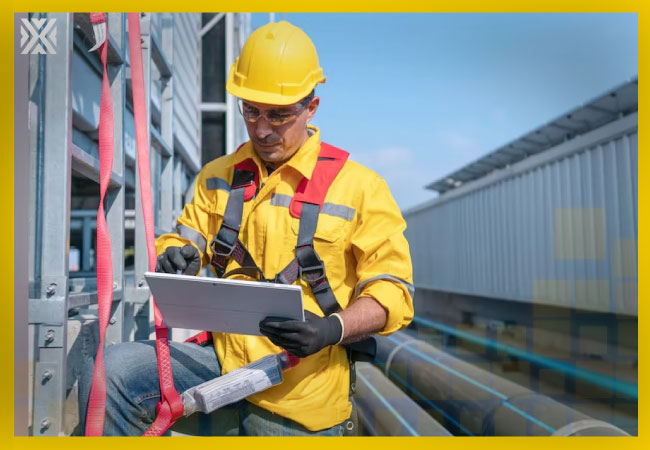Currency
September 26, 2022

Over the years, workplace safety has evolved from a focus on employee behavior and OSHA compliance to a focus on culture, safe conditions, and conformance with organization objectives. However, in order to achieve world-class safety performance, safety must be integrated into the culture of the enterprise. Companies that demonstrate a commitment to safety, and the well-being of their employee's lives, are actively demonstrating their dedication to a workplace culture that values health and safety. Overall, the organizations that prioritize safety and a “people first” approach rise to the top.
As a leader in the safety business, Wesco International has helped companies adapt to this evolving landscape for many years. Ines Sira, vice president and general manager of global safety at Wesco, has over two decades of business leadership experience in Fortune 500 companies, focusing on end-to-end global business leadership in healthcare, aerospace, workplace safety, and industrial markets, and in business models that range from manufacturing to distribution. She is passionate about fostering collaborative team cultures that focus on innovative solutions to complex business challenges.
Read on to hear her thoughts on safety, innovation, and the evolving nature of safety services.

There has been a lot of positive change in safety over the last 10 years, starting with companies intensifying investments in support of enterprise-level comprehensive safety cultures. This is thanks to the deeper regulatory understanding and enhanced awareness of the role employers play in keeping employees safe from accidents, illnesses, and death. And even more specific dimensions, such as manufacturers developing personal protection equipment (PPE) that is multipurpose, comfortable, and even stylish, which results in increased compliance.
Overall, technology is improving workplace safety by fundamentally changing how training, monitoring, reporting, and worker’s compensation are done. Employees can take advantage of new technologies to manage risk and improve real-time high-speed communication more effectively. We now see that the pandemic has challenged assumptions about worker safety, health, and wellbeing, and has helped to intensify the focus corporations place on mitigating risk.
The possibilities brought about by new technologies are endless, and their potential for expanding coverage and improving compliance and effectiveness are exciting. Advances in technology have made safe work practices increasingly achievable.
I am particularly excited by the multipurpose application possibilities of security cameras that can also generate critical safety data, and robotics and virtual reality technologies that will continue to help increase access to education and assist in avoiding injuries or fatalities. I also see great potential in the personalized and empowering benefits of wearable technology with the ability to track biometrics, read bar codes, and generate alerts if there has been an exposure to toxic elements.
This technology is not only improving the effectiveness of safety programs and reducing risk, but it can also improve employees’ awareness of how much employers care about them and their teams.
As a leader in the safety business, Wesco International has helped companies adapt to this evolving landscape for many years. Ines Sira, vice president and general manager of global safety at Wesco, has over two decades of business leadership experience in Fortune 500 companies, focusing on end-to-end global business leadership in healthcare, aerospace, workplace safety, and industrial markets, and in business models that range from manufacturing to distribution. She is passionate about fostering collaborative team cultures that focus on innovative solutions to complex business challenges.
Read on to hear her thoughts on safety, innovation, and the evolving nature of safety services.

What is your perspective on the evolution of safety — particularly, how it has evolved over the past decade?
There has been a lot of positive change in safety over the last 10 years, starting with companies intensifying investments in support of enterprise-level comprehensive safety cultures. This is thanks to the deeper regulatory understanding and enhanced awareness of the role employers play in keeping employees safe from accidents, illnesses, and death. And even more specific dimensions, such as manufacturers developing personal protection equipment (PPE) that is multipurpose, comfortable, and even stylish, which results in increased compliance.
Overall, technology is improving workplace safety by fundamentally changing how training, monitoring, reporting, and worker’s compensation are done. Employees can take advantage of new technologies to manage risk and improve real-time high-speed communication more effectively. We now see that the pandemic has challenged assumptions about worker safety, health, and wellbeing, and has helped to intensify the focus corporations place on mitigating risk.
What new technologies are you excited about?
The possibilities brought about by new technologies are endless, and their potential for expanding coverage and improving compliance and effectiveness are exciting. Advances in technology have made safe work practices increasingly achievable.
I am particularly excited by the multipurpose application possibilities of security cameras that can also generate critical safety data, and robotics and virtual reality technologies that will continue to help increase access to education and assist in avoiding injuries or fatalities. I also see great potential in the personalized and empowering benefits of wearable technology with the ability to track biometrics, read bar codes, and generate alerts if there has been an exposure to toxic elements.
This technology is not only improving the effectiveness of safety programs and reducing risk, but it can also improve employees’ awareness of how much employers care about them and their teams.









